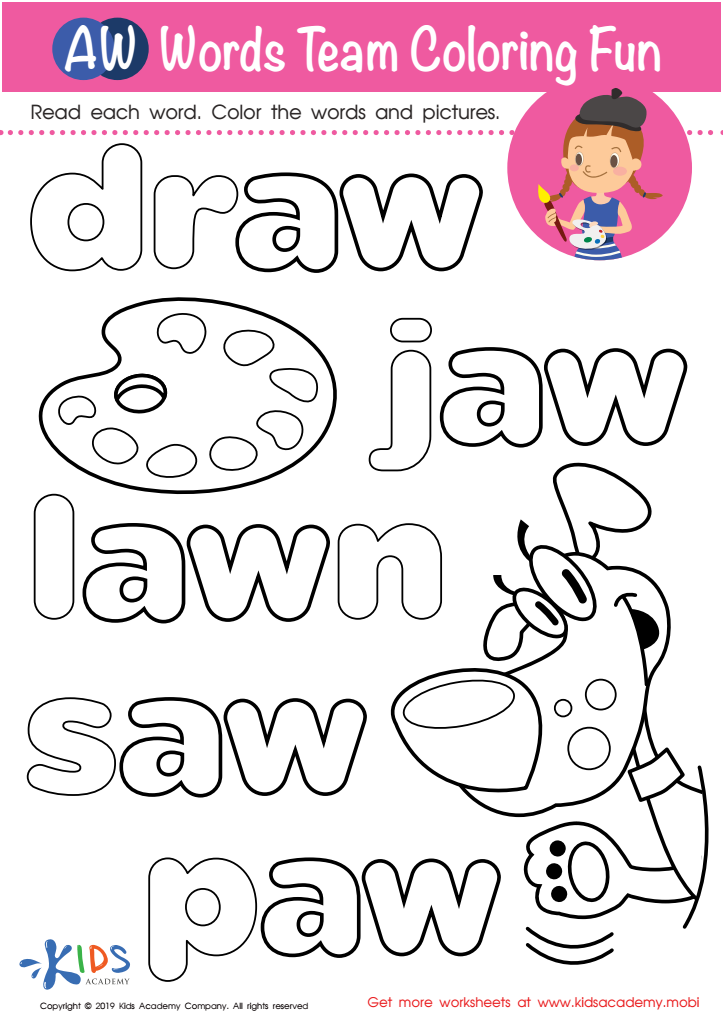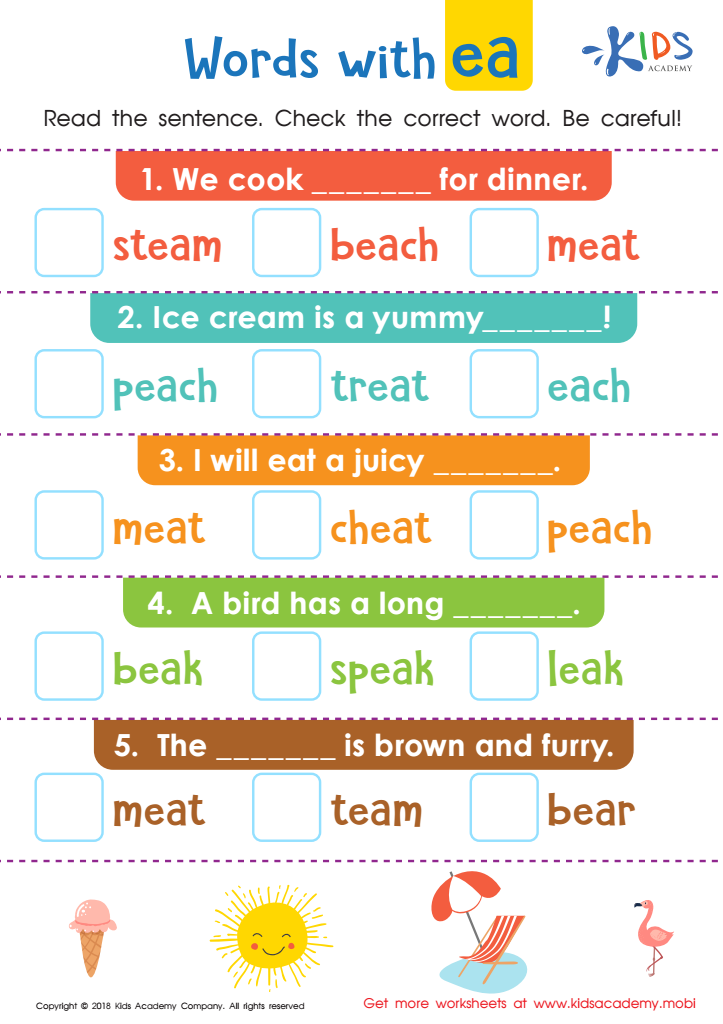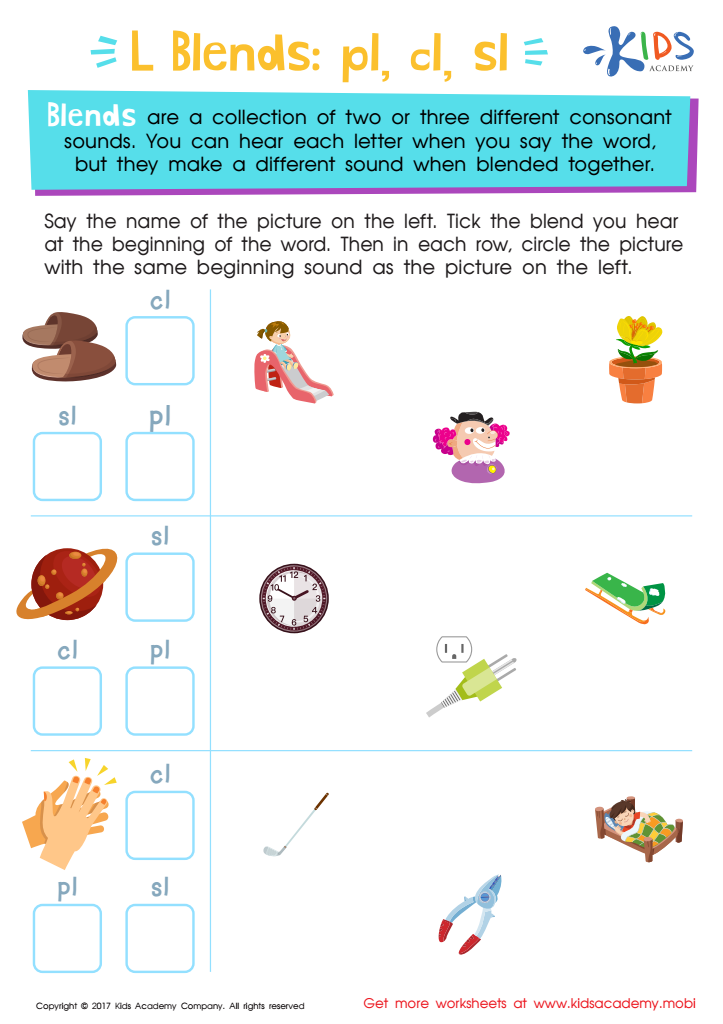Word Recognition Normal Two Letter Phonics Worksheets for Ages 4-9
6 filtered results
-
From - To
Enhance your child’s reading skills with our engaging Word Recognition Normal Two Letter Phonics Worksheets, designed for ages 4 to 9! These worksheets focus on helping young learners recognize and pronounce two-letter words effectively, fostering a strong foundation in phonics. Fun, interactive activities captivate children’s interest, making learning enjoyable. With a variety of exercises tailored to different skill levels, your child will gain confidence while improving word recognition and early reading abilities. Ideal for both classroom settings and at-home practice, these worksheets are a valuable resource for parents and educators aiming to support literacy development in early learners. Start your phonics journey today!


AW Words Team Coloring Fun Worksheet


Words with ea Worksheet


L Blends: "Pl", "Cl" and "Sl" Printable


Medals: Al Spelling Worksheet


Missing Digraph: Part 2 Worksheet


Consonant Blends: "Dr" and "Tr" Printable
Word recognition, particularly through normal two-letter phonics, is a foundational skill for young learners aged 4-9. This skill is vital for several reasons. Firstly, it supports the development of reading fluency. Young children who can recognize common two-letter phonetic combinations, such as "at" or "an," build confidence and automaticity in reading, making the transition into more complex texts smoother.
Secondly, mastering these phonetic pairings enhances vocabulary development. As children recognize and decode simple words, they begin to piece together how language functions, which piques their curiosity about more words. This not only helps in reading but also in spelling and writing.
Moreover, the cognitive benefits of early phonics instruction are significant. Engaging with two-letter phonics sharpens critical thinking and problem-solving skills as children learn to decode unfamiliar words through segmentation and blending.
Lastly, building word recognition through phonics lays the groundwork for a lifelong love of reading. When children feel successful in their early reading experiences, they are more likely to become avid readers, empowering them academically and emotionally. Thus, parents and teachers should prioritize two-letter phonics as a powerful tool for literacy development in young children.

 Assign to My Students
Assign to My Students













